We have much more to do and your continued support is needed now more than ever.
Wildlife in Peril: Nine Species in the Tar Sands War Zone
Up past our northern border is one of the most important wild ecosystems on earth: the Canadian boreal forest. This vast landscape stretches for thousands of square miles across the top of North America, providing habitat for countless animal species and the ancestral home for some of the original humans on this continent — known collectively as the First Nations.
Basically untouched until recent decades, the boreal forest’s great natural riches may also turn out to be its undoing: massive amounts of oil have been found in deposits known as “tar sands,” and the energy industry has kicked off a full-scale war on Mother Nature in their rush to boost their profits. Aided by a government that seems determined to wreck the country’s eco-friendly reputation, Big Oil is transforming huge parts of Alberta, Canada into something out of a nightmare, destroying vital wildlife habitat and putting whole populations at risk.
Read on to learn more about nine remarkable species that are directly threatened by tar sands development, then send a message to the President to help protect them.
Woodland Caribou (Rangifer tarandus caribou)
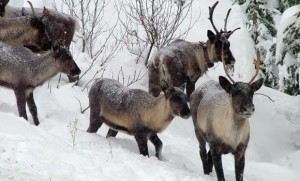
The Canadian federal and provincial governments seem happy to turn a blind eye to the problem, and a stakeholder group that should be leading the charge to protect this iconic species — the Endangered Species Conservation Committee — is stocked with representatives from the energy industry, agriculture and timber companies, who watered down the caribou recovery plan to a toothless piece of paper. And even then, Environment Minister Peter Kent ignored a court order and refused to issue emergency protections for at-risk herds. Scientists fear that industrial development could cause Canada’s woodland caribou to vanish by the end of the century.
Gray Wolf (Canis lupus)
Our understanding of gray wolves has come a long way since the days of Little Red Riding Hood. They are impressively smart, social animals that spend as much time playing as hunting, and live together in close-knit packs of 4 to 7 animals.

But in the eyes of the Canadian government this makes them a threat, and an easy scapegoat for the recent rapid declines of the caribou herds. So the government has embarked upon a plan to “cull” wolf populations using poison-laced bait and aerial hunts from helicopters. The poison, strychnine, is known for an excruciating death that progresses painfully from muscle spasms to convulsions to suffocation, over a period of hours. As if that weren’t awful enough, other animals like eagles and even domesticated dogs have been unintended casualties of the baiting campaign.
Black Bears (Ursus americanus)
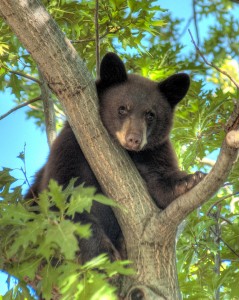
It shouldn’t come as a surprise by now that tar sands development has directly encroached on bear habitat, leading to more interactions between humans and this species. Unfortunately, the government’s approach has been similar to their wolf plan: shoot ’em and keep digging for oil.
Alberta Sustainable Resource Development says 145 black bears were killed by Fish and Wildlife conservation officers last year after being habituated to garbage in the oilsands region. The number of bears shot in the Fort McMurray district was nearly three times the count the previous year and the highest in recent history, said spokesman Darcy Whiteside. Nearly half — 68 bears — were shot in oilsands camps and facilities after being attracted to the camp by food, garbage or other attractants, Whiteside said Tuesday.
Canada Lynx (Lynx canadensis)
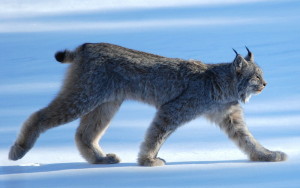
Unlike bears, lynx shy away from contact with humans. Development in the eastern part of Canada has already forced out the big cats, and pressure from tar sands exploitation in Alberta is causing concerns there as well. And there’s a critical connection between gray wolves and lynx: wolves kill coyotes, which directly compete with lynx for snowshoe hare and other prey. So fewer wolves means more coyotes, which means fewer lynx. For a population that’s already threatened, that’s bad news. On the other hand, protecting wolves means lynx may rebound as well.
Sandhill Cranes (Grus canadensis)
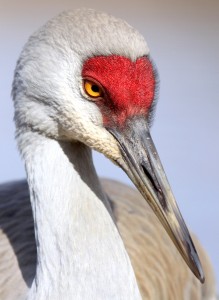
The big birds migrate thousands of miles each year from their breeding grounds in western Canada to as far south as Mexico, fattening up for a month in Nebraska’s Platte River valley. But this exposes them to a double-whammy from tar sands, with Alberta’s energy development destroying prime nesting habitat, and the danger of a spill in the Nebraska Sandhills region (from which they take their name) that could take away a crucial feeding ground. As it happens, their migratory pathway overlaps the route of the proposed Keystone XL tar sands pipeline almost mile-for-mile, meaning that a spill at any point will put this iconic species in harm’s way.
Walleye (Sander vitreus)
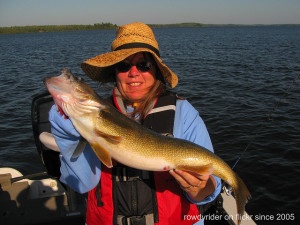
But walleye and several other native species of fish might soon become a scarce commodity if Big Oil gets its way. Residents of Fort Chipeweyan, Alberta (most of whose residents are First Nations members) have reported a pretty scary development in the last few years: lots and lots of deformed fish downstream of the tar sands developments. In 2010, commercial fishing ground to a halt due to concerns about heavy metals like mercury and cadmium…as if anyone would want to eat a filet with a golf-ball sized tumor. The Canadian government, not surprisingly, contests these claims, but independent data shows that contamination has reached 30 times the federally-accepted levels.
In addition to all that, tar sands extraction requires a lot of water — up to three barrels of water for every barrel of oil — and this has disrupted the normal cycles of of the Athabasca river and surrounding watersheds.
Moose (Alces alces)
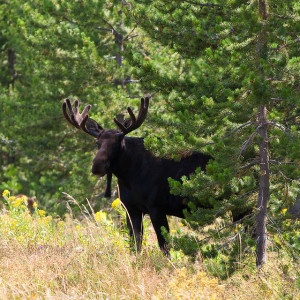
This species has been a major part of native culture and their diet for millennia, but with numbers near Fort McKay, Alberta declining 60% in recent years, First Nations elders now have to travel up to 200 kilometers to find moose during their traditional hunt. Moose meat has also tested high in arsenic and carcinogens created by tar sands mining, endangering the health of the region’s indigenous communities.
Like woodland caribou, moose are prey for gray wolves, and toxins in moose meat spells trouble for their predators.
Lesser Scaup (Aythya affinis)
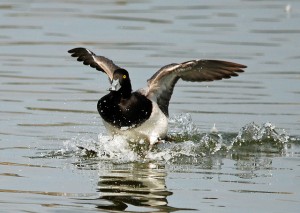
Scaup (pronounced “skawp”) are a favorite of hunters but, like so many other creatures, tar sands operations are taking a toll. In addition to direct habitat loss, Big Oil has created a particularly gruesome way for these birds to die. One of the dirtiest parts of oil mining is so-called “tailings ponds,” gigantic open pits where the industry dumps its liquid waste. There are lots of these contaminated tailings ponds in the delta region, filled with toxic chemicals and oil, but which appear to flying birds like just another good spot to land. And when they do, it’s not hard to imagine what happens: slow, painful death. The industry’s solutions have ranged from the simple (and ineffective), like scarecrows, to the absurd — supersonic “cannons” that boom loud enough to disturb animals for miles around, and scare off any birds from landing in the sludge.
You and Me (Homo sapiens)

And perhaps the biggest threat of all is the danger posed by global warming, which has already reached a tipping point and could be pushed over the edge by burning Canada’s tar sands oil. Rising sea levels, extreme droughts, flooding — it might sound like the Apocalypse but in fact it’s already happening.
![]() Speak up now! Tell President Obama to stand up for wildlife in the tar sands region, and stand strong against Big Oil’s plans to destroy the boreal forest.
Speak up now! Tell President Obama to stand up for wildlife in the tar sands region, and stand strong against Big Oil’s plans to destroy the boreal forest.
National Wildlife Federation is helping to lead the charge against tar sands and Big Oil’s dirty projects like the Keystone XL pipeline, which would help trigger even more development in the boreal forest. We need your help to make sure that this pristine ecosystem and its magnificent animals don’t vanish forever.
To donate directly to our tar sands campaign, please go to NWF’s “Choose Your Cause” website, or visit NWF.org/tarsands to learn more and find out how you can make a difference.





















